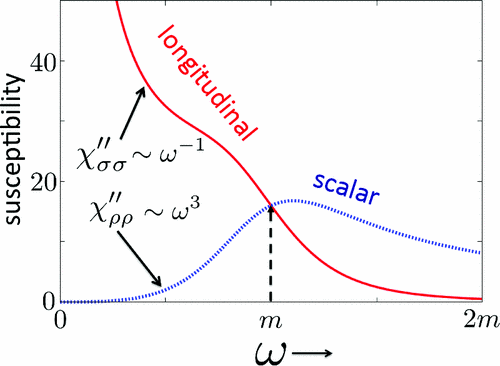The amplitude mode is a ubiquitous collective excitation in condensed-matter systems with broken continuous symmetry. It is expected in antiferromagnets, short coherence length superconductors, charge density waves, and lattice Bose condensates. Its detection is a valuable test of the corresponding field theory, and its mass gap measures the proximity to a quantum critical point. However, since the amplitude mode can decay into low-energy Goldstone modes, its experimental visibility has been questioned. Here we show that the visibility depends on the symmetry of the measured susceptibility. The longitudinal susceptibility diverges at low frequency as Im χ σ σ ∼ ω − 1 (d = 2) or log (1 / | ω |) (d = 3), which can completely obscure the amplitude peak. In contrast, the scalar susceptibility is suppressed by four extra powers of frequency, exposing the amplitude peak throughout the ordered phase. We discuss experimental setups for measuring the scalar susceptibility. The conductivity of the O (2 ) theory (relativistic superfluid) is a scalar response and therefore exhibits suppressed absorption below the Higgs mass threshold, σ ∼ ω 2 d + 1. In layered, short coherence length superconductors, (relevant, e.g., to cuprates) this threshold is raised by the interlayer plasma frequency.
